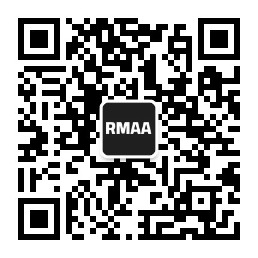Blog about successful marketing strategies in russia
Cartographic marketing in Russia. Who needs it and how to use it effectively?


DIGITAL MARKETING
Share this Post
Cartographic marketing represents an innovative approach to promoting products and services. The approach is based on the use of geographic and cartographic data, which helps businesses to more accurately localize and segment their audience, and make themselves known.
Simply put, the approach is based on the use of various geo services, where you can specify the location of the organization and contact information. In practical terms, map-based marketing is intricately linked with a plethora of promotional tools, offering diverse mechanisms for business growth.
In the Russian Federation, this method is becoming increasingly popular - marketers seek to work as effectively as possible with the audience, establish communication, analyze the market and build promotion strategies taking into account regional characteristics.
So, in this article we will consider the key features of cartographic marketing in the Russian Federation and prove its advantages for modern companies. Our exploration will commence with theory and culminate in practical applications.
Free important points when working with geo services
The Russian Federation is a large country with a diverse culture, climate and consumer behavior. This is when maps come to the rescue.
Why segment the market?
To aptly respond to the demands of the audience and proffer tailored products to the right clientele, it is imperative to eloquently articulate the whereabouts of potential customers and their desires. Marketers use geographic data and divide the market into smaller segments. Subsequently, they identify those segments with the highest concentration of target audience and then create personalized marketing strategies, taking into account the needs and interests of the people in each region.
What insights does geodata analysis yield?
Map-based marketing allows you to emphasize local customers. This is equally important for large organizations that distribute products throughout the country, and for small-to-medium-sized businesses that operate within one or two regions.
How do you forecast business prospects?
Every marketing campaign takes time. Using analytics, a marketer compares different periods of advertising campaigns and notices recurring trends, then concludes what such changes are related to, how much it depends on the region or season. Based on the conclusions, a forecast of demand for goods and services emerges. By analyzing the history of data and changes in consumer behavior in certain locations, companies can anticipate future trends and adapt their business strategy according to these changes.
Now let's turn to practice. For the Russian market, Yandex Maps and 2GIS are the most relevant. What about Google Maps? Here's the story.
Why do you need Google without ads and reviews?
In 2022, Google Maps almost stopped being an assistant for marketers. Advertising promotion, publication of reviews and user ratings - all this has become unavailable for cards of Russian companies and branches of foreign enterprises on the territory of the Russian Federation. However, users who got used to Google continue using the service and visit the business owners' cards, look for contacts and addresses.
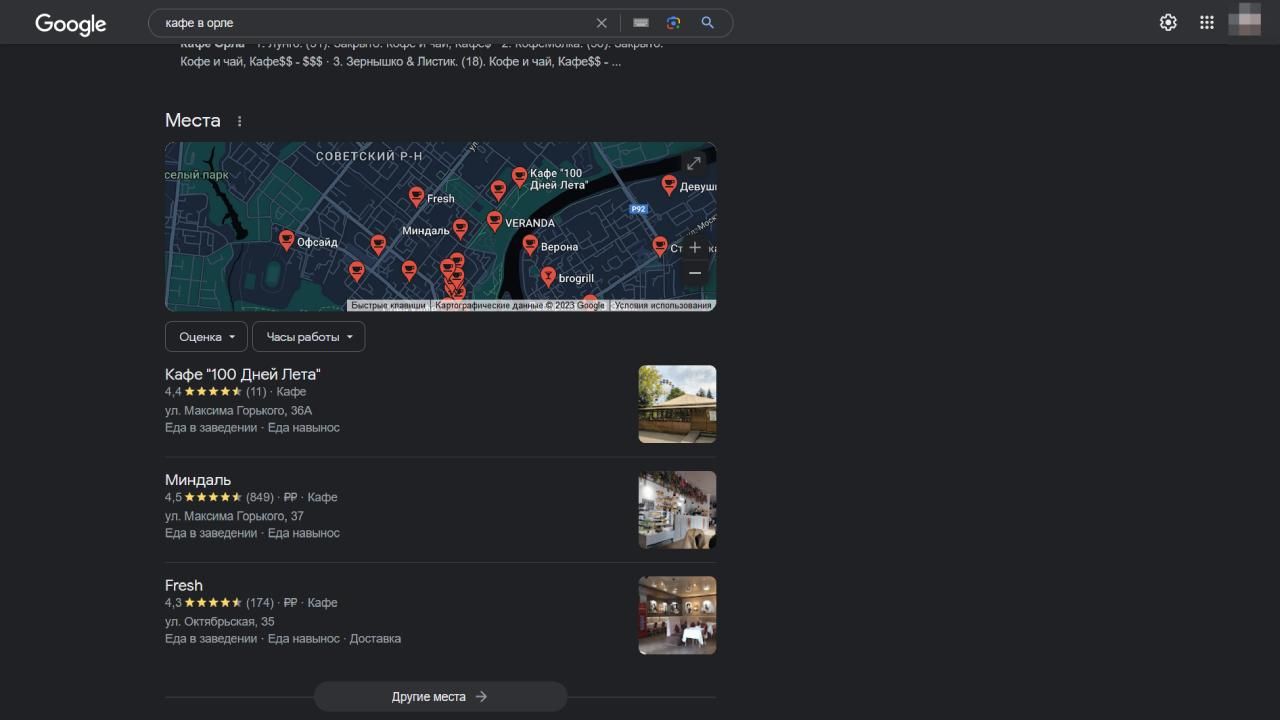
Example of search results in Google.Maps for the query "cafe"
What to do in such a situation? The answer is to use organic promotion: correct, update existing cards, add new branches. In short, do your best to upgrade the company's position in the search engine and increase the flow of users. And remember that customers come to you by means of this service.
What trends in geo services are gaining momentum
The geoservices Yandex and 2GIS have introduced a new generation of maps.
Yandex Maps regularly updates information about new roads, junctions, buildings and other objects so that users have no difficulties in finding the place they need. Maps have become visually more realistic. As time goes on, the maps will also become more detailed: buildings will have windows, roofs, entrances and ramps. These changes have a positive effect on people attitudes towards the place they want to visit. It is comforting to know in advance what awaits a person.
2GIS is working on immersive maps. Buildings and landmarks are drawn on them in a more realistic and detailed way. When using these maps, the user is looking at the photos as if in a guidebook. The city shown as in real life is a big advantage, because map users already want to order a service or make a purchase, they just need to get more information.
What are the current trends for the business to benefit from and increase the number of customers.
Organic traffic growth
A business strives to optimize advertising budgets. Therefore, it is important to utilize the free features of geoservices: to fill company cards with information, to keep track of maps changes, and to work with users' feedback.
The best solution is to use three services at once: Google Maps, Yandex Maps and 2GIS. You can keep up-to-date information on them: addresses and contacts, working hours, photos. Also, there is a column "Description" in the cards, the information from it is indexed by search engines. Here it is recommended to enter keywords since SEO of cards helps to increase the position in the search engine and attract new customers.
Card Reviews
Reviews on cards are a way of business to customer communication, as well as customer to customer. Reviews are gaining popularity. Yandex Maps and 2GIS reviews continue to grow in importance this year, because before making a purchase people study what others write and make decisions based on the feedback they receive.
Consumer behavior studies show that 98% of users read reviews on online maps before they buy a product or service. That's a one-third increase compared to 3 years ago fugures.
Rebranding of networks online
Businesses are constantly changing their structure: some companies merge with others, firms reposition and rebrand, open new offices and close old ones. These processes are worth reflecting on geoservices. Maps will consider this information as an update, and clients will be satisfied that they found you easily.
Intermediate results
Geo services help businesses to make offers more accurate, find potential customers and build loyalty of previous ones. Because of that, map marketing as a tool allows you to find new solutions. This is important when previous strategies turn out to be insufficiently effective and you need to look for other ways to promote your business. We should take into account the fact that geo-services are constantly developing, and the involvement of the audience is becoming bigger and bigger every year.
At first glance, it may seem that only offline companies may need such a tool. But in fact, map marketing will be useful for online businesses due to demand analytics, as well as paid placements within geo services.
Promotion formats in Yandex.Maps and 2GIS
In the first part of the article we talked about the trends of geoservices, now let's move to their advertising possibilities.
It is important to realize that maps are used by an audience that is already "hot": a person who knows what he or she wants, but has not yet decided where he or she will get a service or buy a product. In this case, advertising should simply direct the user to you.
According to the results of the research made by Mediascope company it became clear that the conversion rate of visitors to the site from maps is 2.2 times higher than the conversion rate of visitors who came from contextual advertising. The needs of the audience who came to the site are more shaped and the willingness to make an order is higher than the users who came to the site from the search engine.
Below we will explain more about map services and promotion formats on them.
Practical Guide to Yandex.Maps: Advertising Formats and Recommendations
Visually, Yandex.Maps looks like this: map fragments and the most filled cards of companies are displayed per a query in the search results- with phone numbers, reviews and ratings. It is important that the map and popular cards are displayed in the first line and occupy most of the first page output in desktop version. On mobile devices, the map with cards occupies the entire screen.
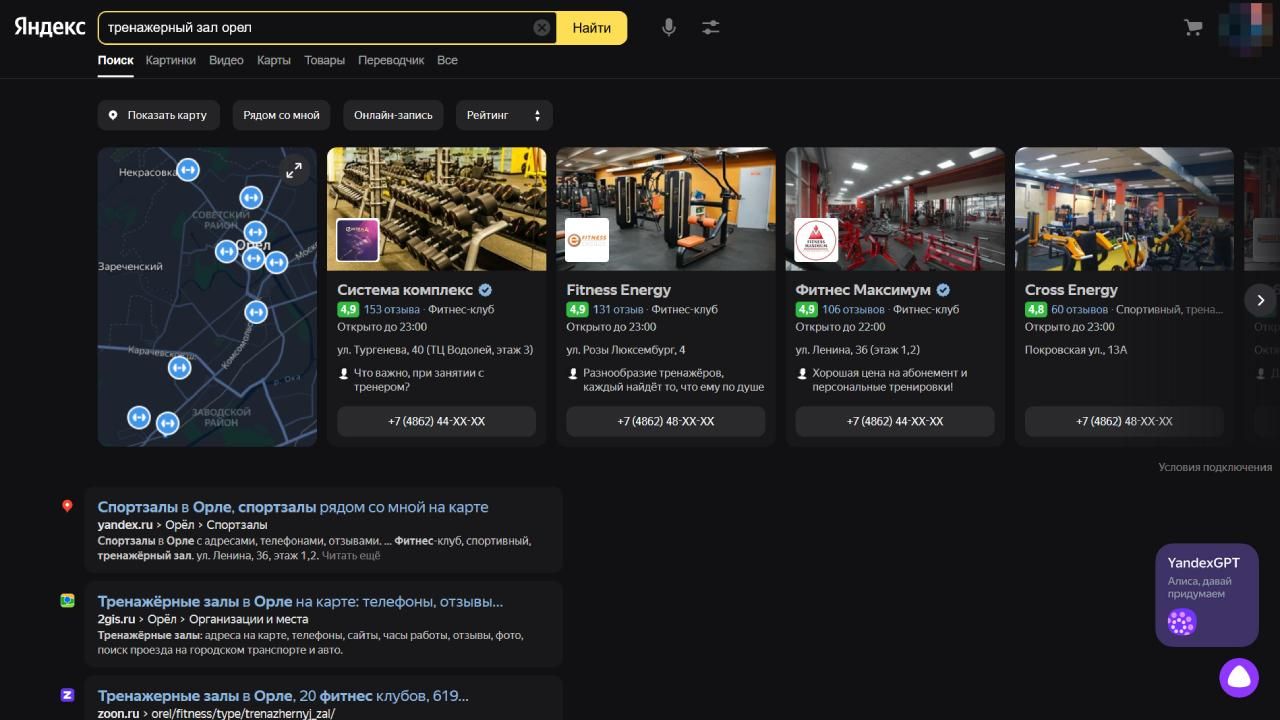
Example of search results in Yandex.Maps for the query "gym"
Thanks to this solution, the understanding of multi-component promotion of online businesses has improved. That is, what needs to be improved on the site, taking into account the geodata of visitors, in order to attract more audience and increase leads conversion. How often and with what goods residents of a certain region fill the shopping cart, how quickly they make a decision to buy. All this data helps to launch high-quality advertising campaigns, targeted advertising and create customized offers that are hard to resist.
It is also interesting that map marketing can be used as a separate tool, without a complex network of advertising campaigns as SEO and contextual advertising.
To make a visitor buy a product, you need to offer him what he wants.
In response to this request, Yandex added to the maps the function of recommending the service companies nearest to the visitor, assistance in routing and indication of public transportation. When the user opens the map, the service suggests visiting the nearest places to you based on earlier search queries. Also the service will ask visitors to leave reviews after visiting a place if they want to. Moreover, reviews play one of the key roles in building a company's reputation. So the number of possible obstacles from the user to the purchase of goods or services tends to minimize.
Advertising formats in Yandex.Maps
Yandex.Maps has 3 placement formats: banner, branded and priority placement. Let's take a closer look at them.
Banner on Maps
Banner advertising is most suitable for websites promotion. It is displayed only in the desktop version, on the search page under the search bar.
To customize such advertising, you need visual creatives and statistics work. Depending on the expected result, you can use a combination of different parameters in the settings of the banner campaign.
-
The combination of settings "audience+geolocation" uses a retargeting audience, which is created based on the goal or segment of Yandex.Metrics.
-
The combination of "interests+social-demographics" settings allows you to run ads to a new target audience. The more parameters are specified, the more precise the display audience will be.
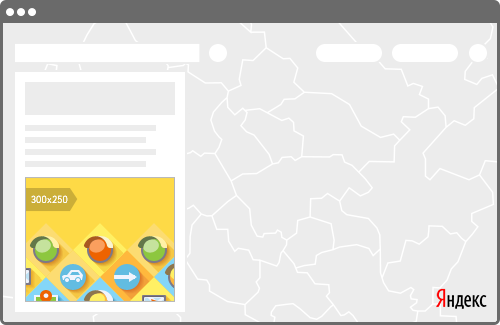
Example of banner placement in Yandex.Maps
Once the Yandex.Metrics counter is linked to an advertising campaign, you can track users' actions after clicking on a banner and analyze the performance of creatives. Moreover, the frequency of impressions per user can be limited to save the advertising budget. Brand Lift research can be launched in parallel with the campaign. With its help, you can assess the impact of advertising on your brand's recognizability.
Priority placement
This format is most suitable for those companies that want to promote their office, i.e. a specific point or several points on the map, depending on the number of branches.
When the card of the organization with a physical address is confirmed, the point appears on the map. Now any user can find it on Yandex.Maps.
What "priority placement" gives:
-
the card gets a green label, which distinguishes it among the standard blue ones. Such a small thing, but it will work well to highlight the business among competitors;
-
the card displays a logo, a product showcase, promotions and an action button. The product showcase looks like a carousel inside the organization card, you can place up to 10 items here;
-
you can customize it so that the company's branch appears in competitors' cards in the "Similar places nearby" block.
Organizations with priority placement occupy up to 10 positions in the desktop version and up to 5 positions in the mobile version In the Yandex.Maps' search results.
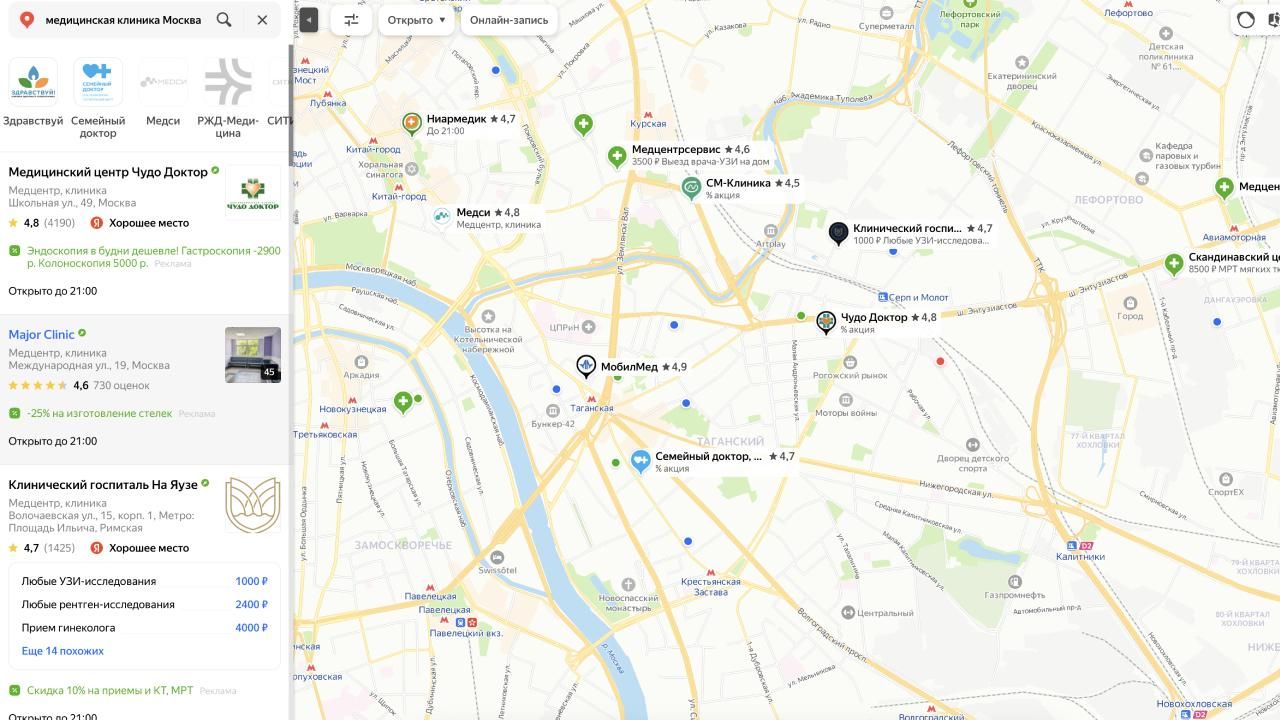
Example of priority placements showing in Yandex.Maps for "medical clinic Moscow" request
Branded placement
This placement format works well in conjunction with "priority placement". Thanks to it, a point on the map displays the organization's logo - it positively affects the reach and brand recognition.
To launch branded placement, you need to contact Yandex Business managers. The minimum cost is 299,880 rubles for 90 days. The exact price depends on the specific organization.
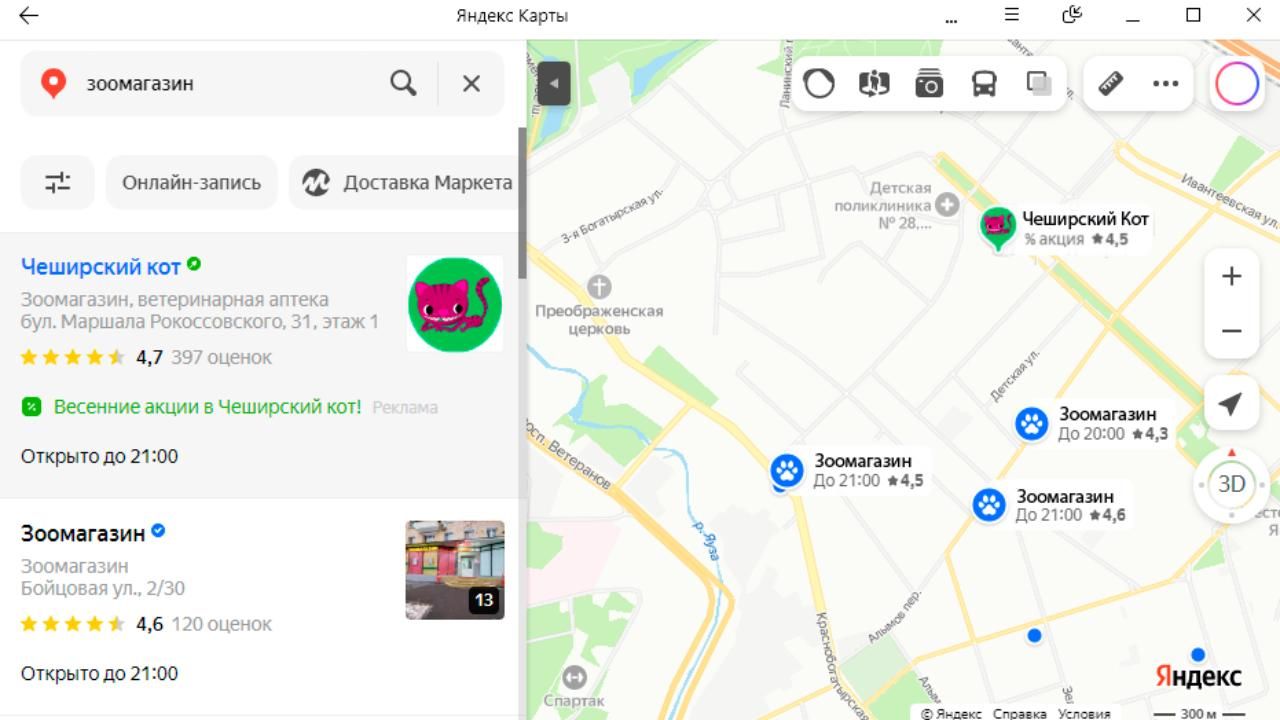
Example of branded priority placement in Yandex.Maps
Thus, Yandex.Maps has effective approaches for segmenting the audience by geo, interests, etc., as well as opportunities for paid promotion within the service itself, which, in fact, will be cheaper in terms of budget than purchasing contextual advertising in Yandex.Direct.
Optimization and advertising opportunities of 2GIS
Along with Yandex.Maps, 2GIS is one of the largest geoservices in Russia and the CIS. It has detailed reference information about 91,000 companies and organizations in 730+ cities in Russia, Kazakhstan and other countries. The monthly audience of all 2GIS platforms exceeds 65 million people.
The service's maps are highly accurate. 2GIS has floor plans of buildings, indication of entrances and up-to-date information about companies, photos and reviews. The 2GIS mobile application has a navigator that works online and offline.
When entering the service, the user sees a grouping of organizations by area of activity, by clicking on which you can specify what to look for, and then select the desired one among the list of displayed organizations based on position or good presentation, completeness of information. Businesses can attract attention with the help of advertising formats, which we will describe below.
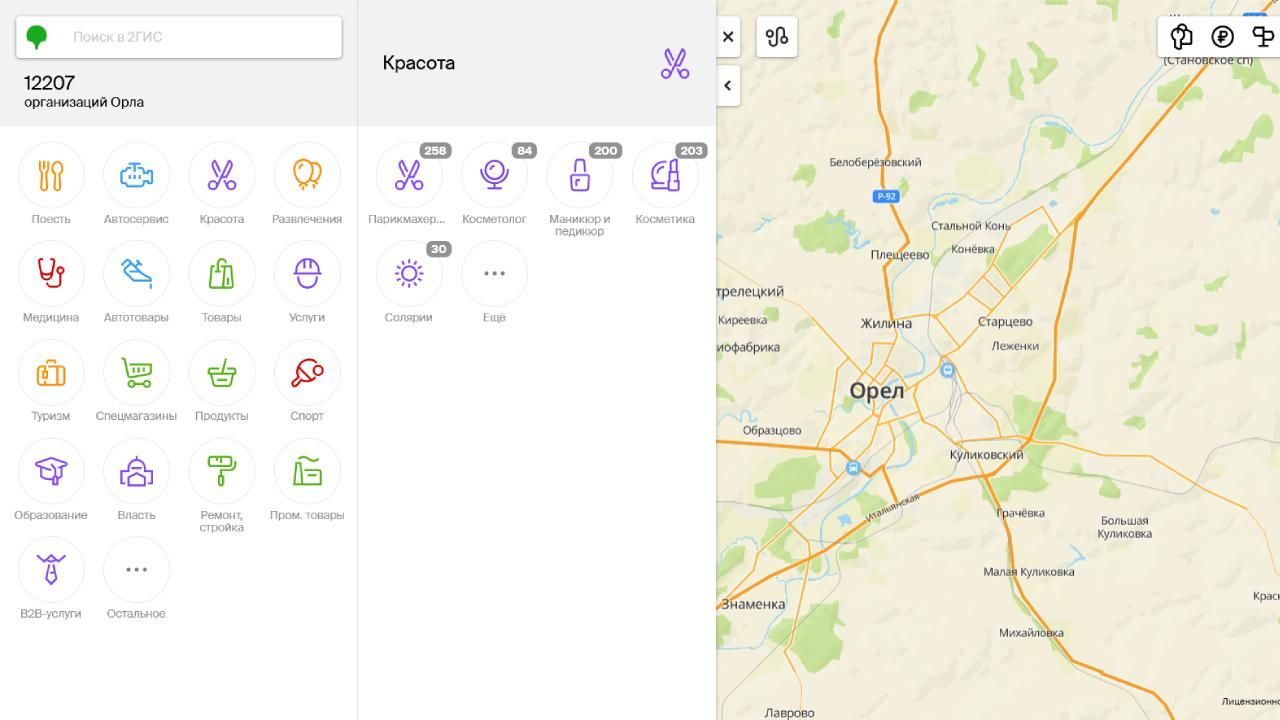
Example of navigation in 2GIS by company area
2GIS advertising formats
Promotion in 2GIS helps to increase recognition and audience reach, thereby increasing sales. There are several types of placement on the site.
Geocontextual advertising
These are ads that users see in search results within the service based on location. In other words, the user enters a search query and receives your company's advertisement in the first places of 2GIS. This promotion format takes into account interests in a certain range of goods and services in a particular city or even a district.

Example of 2GIS geocontext advertising placement
Such advertising raises the company's priority in search results, but is perceived natively, as a part of the reference information. The user goes to the company card, learns details, leaves a request or builds a route.
Media ads
These are ads that users see regardless of their location and search queries. Therefore, you can expand your reach and find new audiences, increase brand awareness among people within the media format in the chosen region.
Media advertising formats in 2GIS: animated and static banners, banners with video, logos on the map.
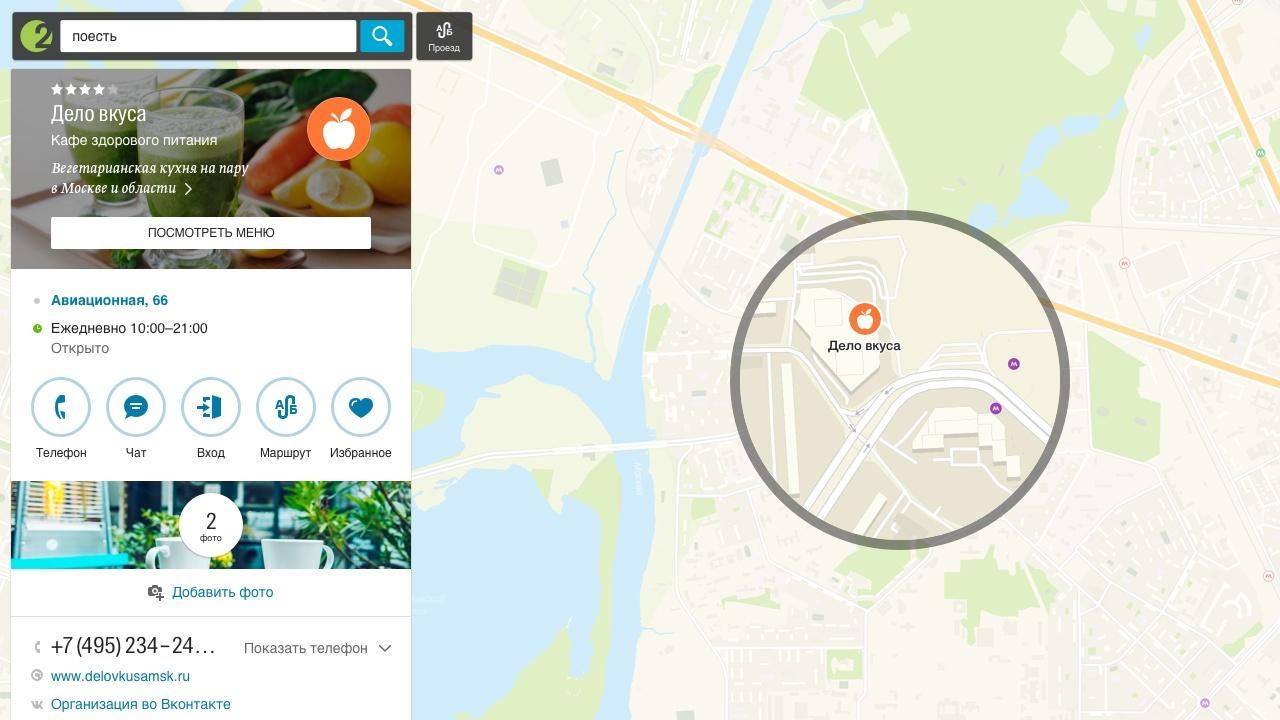
Example of 2GIS media advertisement placement in a building card
Banner can be displayed directly on geo objects, in the card of the building or in the card of a street, fountain, playground or other object. You can set up the advertisement so that it is displayed on the cards of organizations that maintain the building.
Advertising in the cards of partners
The format works on the principle of contiguity. When the user goes to the card of partners of the organization, he sees the offer of the organization as well. Such a placement is perfect for suppliers and manufacturers of goods of constant demand and online services. For example, for companies supplying food, event tickets or hotel booking services.
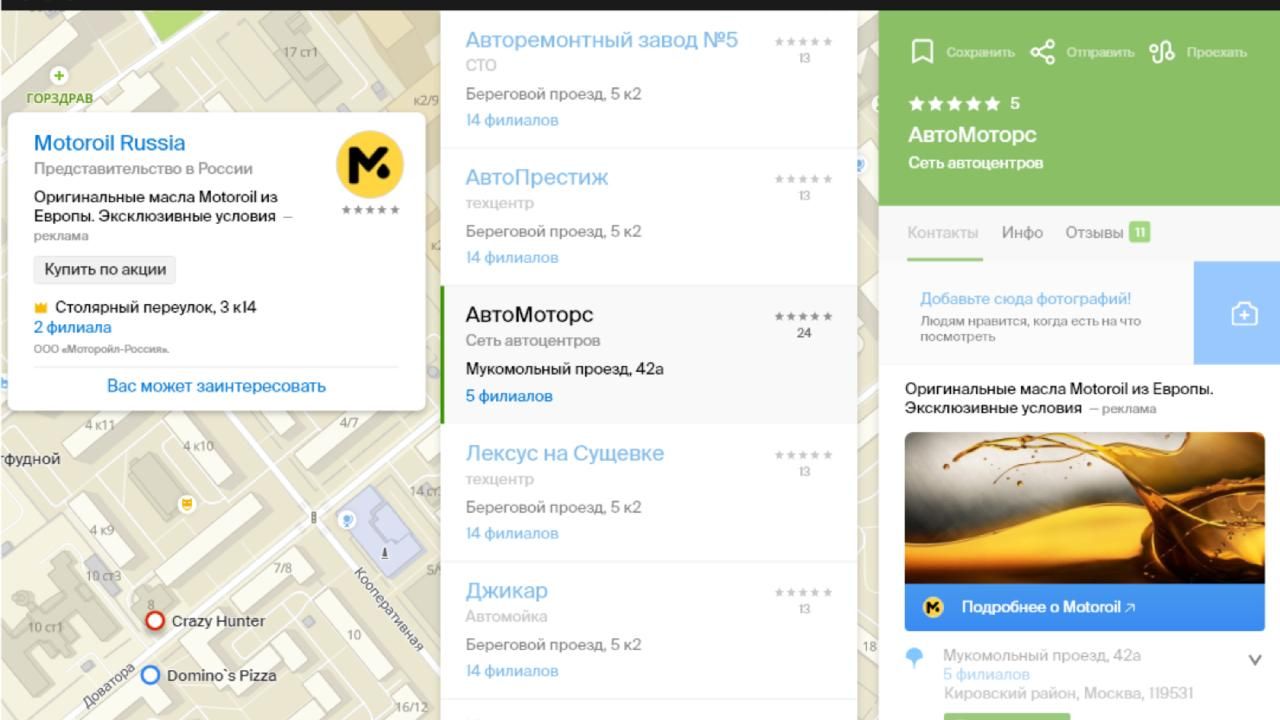
Example of advertisement placement in the 2GIS partner card on auto topic
2GIS analytics and database
How can business use 2GIS? Fill in the information on the card of your company: check the accuracy of geodata, place a photo of the front and entrance to the office, enter the website address and working hours. After that, the user will find the organization even with the help of hints.
In addition, 2GIS has big data, which contains anonymized data of more than 60 million users of the service. This data is available in "Pro" mode and contains information about what services are most relevant for a particular location, and also shows the organizations operating in the area (you can analyze the density of competition), the number of residents, the density of buildings and so on.
With this information, businesses can test their hypotheses without too much risk at the implementation stage, simply analyzing the data for further advancement.
Conclusions and Insights
Cartographic marketing is a powerful tool for promoting goods and services in Russia. Geographic market segmentation, attracting local customers, optimizing product distribution, demand forecasting and the ability to run or not to run spot advertising... All these advantages allow companies to achieve greater efficiency and success in the market, increase their visibility among customers and stand out significantly among competitors.
Implementation of map marketing in business promotion will help to maximize the potential of each region and create a more meaningful experience for customers, build communication between the seller and the buyer, while material investments in this direction are minimal.
Promotion on maps is suitable for both offline and offline businesses if they want to popularize themselves, collect feedback and increase sales and also to better understand audience demands and respond to them by segmenting into specific regions where the greatest number of customers are concentrated.
We recommend using mapping as a promotional tool and leveraging statistics from all relevant geo sites. The audience of the three main mapping services overlaps partially, so the most complete picture can be obtained on the basis of data from all three platforms: Google Maps, Yandex.Maps and 2GIS. Of course, this is also a matter of constant testing of hypotheses and choosing the best solution for the business. At the same time, geo-services are only part of a big story related to promotion on the Russian market.
Subscribe to our newsletter to learn about other tools, trends and approaches in today's digital realities.
Join 2,000+
of your Peers!
You will be the first to know about Russian marketing insights, news and updates from our agency. Stay tuned!
Get our latest articles delivered to your email inbox and get our exclusive White Paper
"Digital Marketing in Russia. Finding your customers on the internet"
for FREE!
Russian Digital Market Overview
Strategic Insights into Russian Digital Marketing Landscape
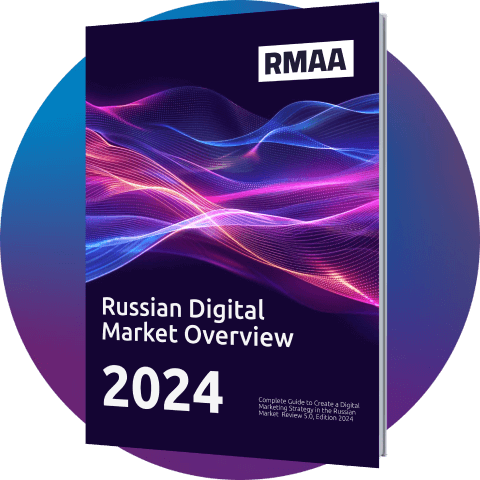
Ready to partner with the specialists in Russian marketing and advertising?
About the Author
Digital Strategist. Head of one of the project groups at RMAA. Maria started her journey in digital marketing in 2009.
Join 2,000+ of your Peers!
Get our latest articles delivered to your email inbox and get our exclusive White Paper "Digital Marketing in Russia. Finding your customers on the internet" for FREE!
You will be the first to know about Russian marketing insights,
news and updates from our agency.
Stay tuned!
We're updating our website's design step by step, so some pages may look different. Thank you for your understanding.
Got it








